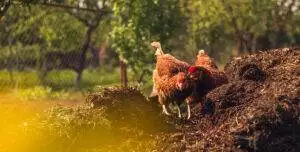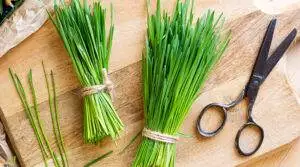Living in an urban environment is no barrier to embracing permaculture concepts, ideals and goals. Gardening in small spaces, you can still achieve remarkable things, grow at least some of your own food and live in a more eco-conscious and sustainable way.
When many people picture a permaculture home and garden, they imagine a countryside idyll, with a large garden or homestead acreage. But permaculture ideas can be applied in many different settings, and city dwellers can certainly also get involved.
Even if you only have a very small garden – even if you rent, or have no garden at all – you can still employ permaculture principles and practices to achieve great things – if only on a very small scale.
Analyzing Small Spaces to Create an Urban Garden
When dealing with small city spaces, analyzing and understanding the space available to you – identifying the potential for home growing – is especially important.
In order to create a garden when space is limited, you need to be particularly mindful of the environmental conditions. Observation is key. Through looking and listening carefully, you can learn a lot of the things that you need to know to grow successfully wherever you live.
Of course, urban gardens can look very different to one another. Sometimes, an urban garden can be a small patch of lawn, a paved patio space, or a courtyard. Sometimes, an urban garden might be a rooftop. It might be no more than a balcony or even just a sunny windowsill.
Whatever space you have available, it will certainly have its challenges and weaknesses. But an urban garden of any size and form can have its advantages too.
Once you can clearly see the strengths, weaknesses, opportunities and challenges of your location, you will be better equipped to make the right choices about the space and create a design that works for your specific situation.
Determining Your Goals
As well as analyzing and observing the site for your urban garden, it is also important, before you even begin to work on making decisions and creating a design, to determine your goals. Ask yourself what you want to achieve.
Some urban gardeners may simply wish to grow a little of their own food at home. Others may have more complex and multi-faceted goals. For example, you might want to create a garden for recreation as well as productivity. You might have kids to accommodate in a design. You might focus on urban greening or rewilding, and have wildlife attraction as a key priority.
If you set out from the beginning with clear goals for your urban garden, you are far more likely to achieve them.
Making the Most of Space and Time
With any small-space gardening, one of the top things to think about is how exactly you can make the most of both the space and the time available to you.
In an urban garden, you may think of space as the limiting factor. But time – both in terms of your own time, and the time available for growing food and other plants during the growing season and throughout the year – can also be a factor the influences how much you can do.
The right design decisions can help you achieve the highest yields possible for the area and amount of time available where you live and in your particular situation.
Multi-Functional Spaces & Integration
In order to make the most of space and time, stacking functions and stacking plants in both space and time can be important.
Stacking functions is all about creating multi-functional spaces. It involves making sure that you do not put all your eggs in one basket, embrace diversity, and make sure each element has multiple functions and there are multiple elements fulfilling each function.
In permaculture, we always work on the premise that we should integrate, not segregate. So it is important to think about the whole of the space and the environmental patterns before we hone in on the details.
Multi-functional spaces and integration are especially important where space is limited in a city garden.
To give just one example, we might integrate a bench seat into the side of a raised polyculture bed, which opens to give a little storage space within for hand tools, pots or other equipment…
Fortunately, there are many ways to make sure that the space and its plants and other elements do as much for us, for each other and for the system as a whole as possible.
Blending Home & Garden
In an urban environment, the build landscape can make it challenging to forge a close connection with the natural world.
So those who are lucky enough to have outside space should definitely try to ensure that there is a strong connection between their home and garden. And they should aim to blend their home’s interior and exterior spaces so that they feel very much part of the garden’s natural environment.
To blend the inside and outside spaces, we can both bring plants into the home, and bring living spaces out into the garden. There are many interesting and innovative ways to do so depending on the precise location, size and characteristics of the particular space.
Choosing a Growing Method for Food Production
Food production in an urban, small-space garden can take a range of different forms. So once you have a clearer idea of the site and your broad goals, it is a good idea to think a little about which growing method or growing methods you might employ.
So let’s take a look at some of the options that you might consider:
Container Gardening
In even the smallest of spaces, container gardening can offer you the opportunity to take food production into your own hands. You might be surprised by how many different plants can be grown in pots or other containers.
Numerous annual crops and perennial species, small climbers and shrubs, and even dwarf fruit trees can be grown in containers, as long as these are suited to the species in question and of sufficient size.
Vertical Gardening
Vertical gardening techniques that you could consider to increase yield in your garden include:
- Simple shelving.
- Vertical gardens – made from wood pallets, from guttering, or from scrap fabrics (with planting pockets) for example.
- Trellises or other vertical support structures for climbing/ vining plants.
- Wires strung between frames, and cordons for crops like tomatoes.
- Stacked planters or planting towers.
- Hanging baskets or other hanging containers.
Vertical gardening can dramatically increase the number of plants you are able to grow – even in the smallest of spaces.
Raised Bed Gardening
Sometimes, it will be possible to create in-ground growing areas in a small urban garden. Often, however, the soil may be poor or covered with paving or hardstanding.
Raised beds offer the option to grow over whatever surface currently exists. As slightly larger areas, they can dry out less quickly than smaller containers and therefore take a little less work. Creating lasagna no-dig beds, hugelkultur beds, or wicking beds can be water-wise solutions, and each of these ideas can be tailored to even the smallest of outside spaces.
Small-Scale Aquaponics
In small spaces, or on sites with other limiting factors, there is another interesting avenue to explore. You can consider starting an organic garden by growing food in water rather than in soil or another growing medium.
Growing plants in water is known as hydroponics. It is possible to set up hydroponic growing solutions on a tiny scale.
Even more interesting and sustainable is the idea of aquaponics. Aquaponics involves integrating a fish-keeping system with a hydroponic system. There are several ways to set up small-scale aquaponics systems in an urban garden.
Small-Scale Forest Gardening
When you think about a food-producing garden, it is likely that you imagine neat beds with rows of fruits and vegetables. But a typical kitchen garden is only one type of edible garden to consider. One of the best low-maintenance gardens is a forest garden. And forest gardens can be created on a surprisingly small scale.
Unlike the methods above, which are typically associated primarily with annual food production, forest gardening involves growing mostly trees, shrubs, and other perennial plants.
Urban gardeners may often believe that they do not have enough space to grow any trees. But sometimes, trees can be trained and pruned to take up much less space than you might imagine.
Trees can be espaliered against walls or fences, trained into fan shapes, pleached, or grown as cordons or columnar trees when space is especially tight. There are even step-over apple tree cultivars to consider…
Trees obviously tend to take up more space than other plants. But when you adopt the forest gardening approach and create layered planting schemes, you will be amazed by how much you can grow in a relatively modest area.
Even where you cannot or do not wish to include trees, you can still adopt the layered and dense planting approach – embracing perennial plants to create a low-maintenance garden.
Of course, you do not have to restrict yourself to only one of these growing methods. You can include elements of different methods to create a garden that really works for you. It is just important to understand in a small space that you have more options than you might have thought, and are truly limited only by your imagination.
Water and Irrigation in Small Spaces
One thing that sets permaculture gardeners apart from many other growers is that wherever they live, they will not dive right into choosing plants and sowing and planting. Rather, they will think holistically about the setting, their needs and their goals and work to plan and prepare – creating at least a rudimentary design before they begin.
One key consideration for urban gardeners relates to how they source, direct and manage water for their garden. Even when you only have a few pots on a windowsill indoors, thinking about where the water to keep your plants hydrated will come from is important.
Whenever possible, it is best to use natural rainfall to water plants grown in non water-based growing systems.
Harvesting rainfall in cities might look a little different in a small urban space than it does elsewhere. But streamline water butts or barrels are available, and even placing a bucket outside or hanging one out of a window to collect rainwater when it falls could be beneficial.
In shared spaces and apartment blocks, collaboration with neighbours in this regard could be key.
Once you know where your water is coming from, you next need to consider how you will direct that water to where it is needed.
In a container garden, you may simply water by hand. But it is important to think about whether you will have the time for hand watering, and also to consider what will happen when you are away from home.
Setting up a simple system with watering globes, bottles placed upside down into the growing medium, clay pots at the heart of a container, wicks, or ‘self-watering’ containers can help minimize water use and make the garden less intensive to manage over time.
If you create raised beds, wicking beds with reservoirs of water at the base are an efficient way to make sure plants get the water they need. Small-scale drip irrigation systems can also be interesting and useful to explore for a small urban garden.
You might also consider hugelkultur methods to create a medium that stores and retains more water and won’t dry out as quickly as other raised beds. And you can also use mulches, and create shade judiciously, to reduce water needs.
In a small urban garden, a forest garden or other perennial planting scheme – especially one that uses native plants – can also help you make sure you have a water-wise garden that is more resilient and less likely to fail.
Composting & Maintaining Fertility in Small Spaces
Even in the smallest urban permaculture garden, thinking about how you will create the garden and maintain it over time is very important.
While you may need to purchase some materials up front, your goal should always be to minimise the amount that you buy in, and make your garden as self-sufficient as possible.
In a small urban garden, you might not be able to do all you might wish. But you can at least make sure that you create your own compost at home. Composting kitchen scraps is something you can do indoors, or in even the smallest of spaces. And this compost will be invaluable to you in filling containers and/or improving and maintaining raised beds and soil health.
Small hot composting systems, vermicomposting, and bokashi systems can all be interesting small space composting/ fermentation methods to explore, even when space is at a premium in a city garden.
The information above is designed only to give you some pointers to help you head in the right direction and develop a design, methods, and planting plans that work for you.
There is of course, a lot more we could delve into when it comes to gardening in small spaces, but keeping the above in mind should help you begin to embrace urban permaculture in all its complexity, and find the solutions that are right for you.







